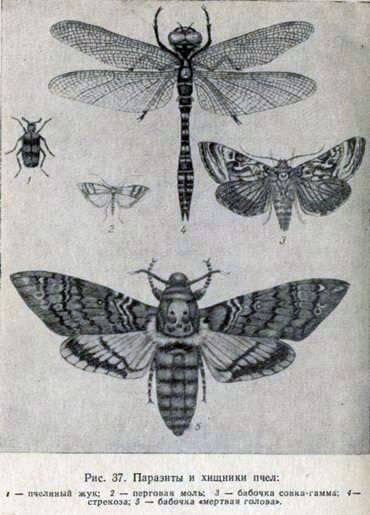
The dragonfly (Aeschna grandis) is a large insect with a length of 50 mm and a wingspan of 70 mm. Wings are large, transparent, yellowish, the head is large, with strong jaws. The breast is strongly developed. The dragonfly larva lives in the water.
Dragonflies feed on mosquitoes, mosquitoes and other harmful insects and thus benefit the human being. In the years of strong breeding, dragonflies attack bees and massively destroy them. In such years, often die and the uterus, departing for fertilization.
Control measures are not developed, with mass attack the apiary is removed to the winter hut.
Ветчинный кожеед. Пчеловодство в павильонах.
Predator bees